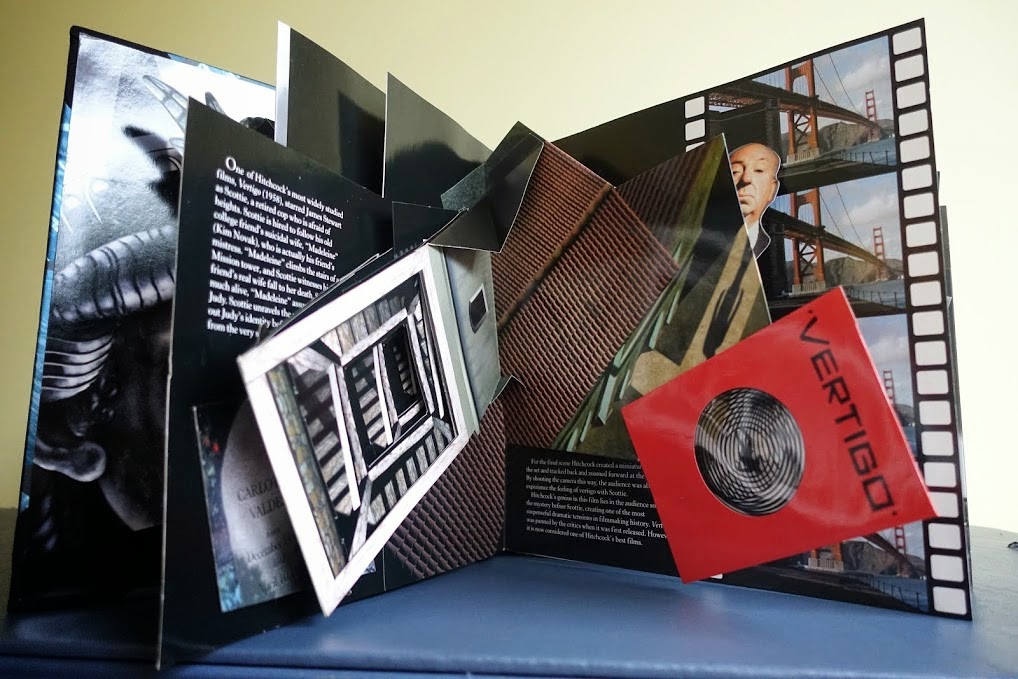Sophisticated and Complicated . . . I Am Talking About Pop-Up Books!
I am fascinated by movable books! The history of paper engineering dates back to the 13th century. The Catalan mystic and poet, Ramon Llull of Marjorca, used revolving discs (volvelles) that illustrated his religious beliefs. The volvelles, consisting of two or more circular pieces on a single spindle, turned independently to reveal letters or terms of special significance to the reader. Books with movable parts were produced in the 16th and 17th centuries: these were mostly medical texts with layered plates of anatomical Illustrations which, when lifted, reveal the body’s organs, muscles, and skeleton. I remember as a kid lifting the inlays of the human body article in the World Book Encyclopedia.
Movable books for children were first published in the 18th century with the intent to entertain, not instruct. Harlequinades were small books that were hinged at the top and bottom of each fold and the picture was cut through horizontally across the center to make two flaps that could be opened. The main character was Harlequin, hence the name.
The peepshow (tunnel book) had accordion side panels attached to stiff front and back covers, forming layers one behind another and could be viewed as one scene that appeared as a three- dimensional display.
Some moveable books were based on the venetian blind (jalousie), where the illustrations had a square or an oblong picture divided into four or five equal sections by horizontal or vertical slits. The pictures changed into a completely different picture when the reader moved a tab on the side of the illustration.
The growth of pop-up books in the 20th century was a result of the formation of packaging companies. The stand-up illustrations that form pop-ups are printed and die-cut by machine. But note – it is by hand that the individual pieces are folded, glued, and assembled!
Although pop-up books contain very few pages and only a small amount of text, they are suitable for children as well as adults. Readers of all ages will be amazed by glitter, foil, tactile inserts, sound chips, and lights that are activated by turning a page. The colors, detailed illustrations and interlocking paper parts in pop-up books will amaze and entertain young and old.
Using the MCLS catalog, one only needs to type “toy and movable books” in the subject search to discover that there are nearly 1,000 books on this topic! Pop-up books are fragile, so you will need to ask a youth services or reference librarian in order to look. So go to your nearest branch library and ask to see these awesome books! You just might be as fascinated as I!
The Castaway Pirates: A Pop-up Tale of Bad Luck, Sharp Teeth, and Stinky Toes / Marshall, Ray.
When their sailing ship, the Stinky Toes, springs a leak during a storm, a band of pirates too long at sea blames their captain, Runny Nose, and tries to plug the hole with his shoes, his coat, and other items, while a gray shark circles near.
The Mystery of the Messy Clubhouse / Feldman, Thea.
When Mickey and his friends discover a messy clubhouse, they need the help of Toodles, some Mouseketools, and your child to get to the bottom of the mystery.
America the Beautiful / Sabuda, Robert.
Master paper engineer Robert Sabuda has interpreted the classic American anthem "America the Beautiful" in dazzling dimension. From the Golden Gate Bridge to Mount Rushmore to the Statue of Liberty, America has never looked more spectacular. This stunning keepsake masterpiece will be shared and admired by generations to come; indeed it is a national treasure in and of itself.
 White Noise: A Pop-up Book for Children of All Ages / Carter, David A.
White Noise: A Pop-up Book for Children of All Ages / Carter, David A.Modern and elegant paper structures create displays to stimulate the senses. Poetic text guides readers through the bold and colorful paper structures that create their own unique sounds.
Big Frog Can't Fit In: A Pop- out Book / by Mo Willems; paper engineering by Bruce Foster.
If the frog cannot fit in; just make a bigger book!
Star Wars: A Pop-up Guide to the Galaxy / Matthew Reinhart.
Loaded with special features -- pop-ups, working light sabers, pull tabs, and other interactive pages.
Alfred Hitchcock, The Master of Suspense: A Pop-up Book / paper engineering by Kees Moerbeek.
A classic collectible pop-up.
Want to make your own pop-up card or book? Try reading: Valenta, Barbara. Pop-O-Mania: How to Create your Own Pop-Ups.
History portion of this post was taken from:
Zipes, Jack, and Ann R. Montanaro. "Movable Books and Pop-Up Books." The Oxford Encyclopedia of Children's Literature. Vol. 3. Oxford: Oxford UP, 2006. 105-9. Print.
- Susan S.







Comments
Post a Comment